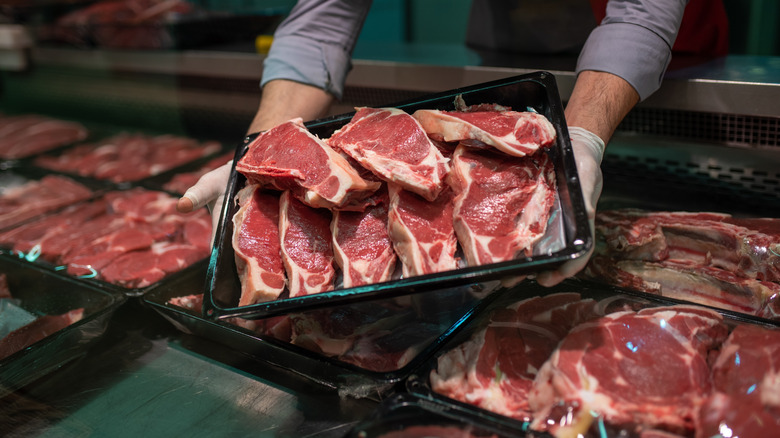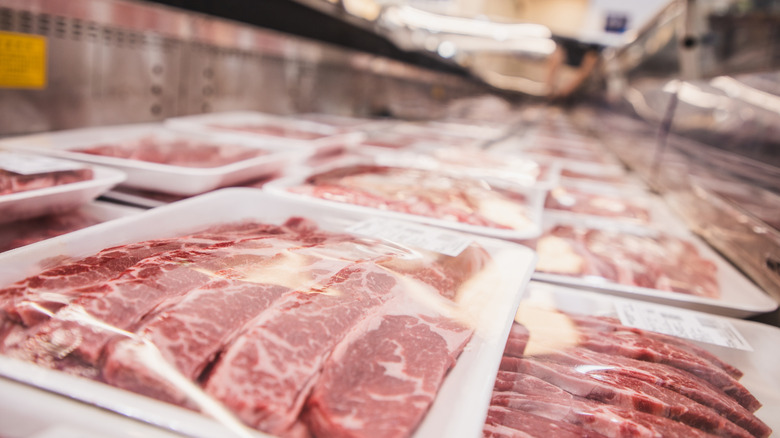Want The Best Steak At The Store? Check For These Color Clues
Whether you're opting for a simple salt and pepper crust or marinating your cut for hours, the best steak dinner starts by learning how to choose the perfect steak at the store. We spoke with Maricel Gentile, chef and owner of Maricel's Kitchen and author of "Maricel's Simply Asian Cookbook," to learn more about how a steak's color indicates its quality.
"A good fresh steak should be bright cherry red when exposed to air," Gentile said. "That red color means oxygen has activated the myoglobin in the meat. If it's a little purple, that's okay too[;] it just means it hasn't had air exposure yet." One of the biggest steak myths is that the red liquid seeping from a cut is blood, but that's actually the myoglobin Gentile refers to. It stores oxygen in muscle cells and is responsible for much of a great steak's bright red color, indicating the cut you're looking at is fresh and ready to be made into a juicy, tender meal.
"Brown spots or gray tones aren't always bad — aging can cause color changes — but they can also signal oxidation if the meat is too old or improperly stored," Gentile continued. "Trust your nose as much as your eyes." If possible, taking a quick whiff of slightly discolored meat is a good way to determine if the steak has truly gone bad or was only packaged improperly. Still, the color of beef varies between animals, cuts, and packaging choices.
How does beef color change with cuts, animals, and packaging?
While a bright red cut of steak may get your mouth watering in the store, sometimes cuts of a different color are just as good and possibly even better! The main contributors to beef coloring differences are the animal's diet and age, how the meat was stored, and what cut you're looking at.
"Vacuum-sealed beef often looks darker or purplish because it hasn't been exposed to oxygen," explained Maricel Gentile. "Once you open it and let it breathe for a few minutes, the color will brighten. Open-air wrapped beef at the butcher case will look [redder] due to air exposure." While it's still safe to eat steak if it doesn't bloom into a more scarlet color, failure to revert back to a bright cherry red may mean your cut is a bit old or wasn't stored properly.
Though you may be used to bright red ribeyes, Marcile Gentile suggested not overlooking hanger or skirt steaks just because they're a bit darker. When cows exercise a muscle more than others, it develops more myoglobin, so these muscles are far darker than filet mignon. Similarly, cows harvested at an older age or grass-fed varieties that receive more exercise also have darker meat overall compared to feed-lot animals slaughtered at younger ages. Overall, provided your meat is free of discoloration, passes a smell test, and resumes its shape after a soft poke, it should be fresh and ready for a spot in your shopping cart.


